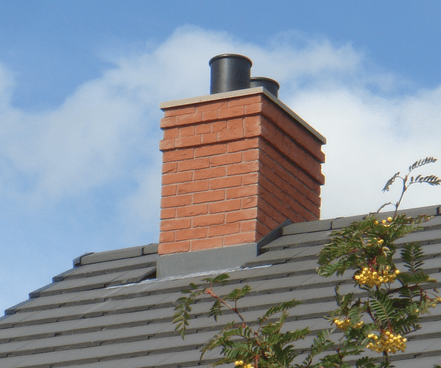 Does my chimney need to have a lining fitted?
Does my chimney need to have a lining fitted?
All chimneys constructed from 1966 onwards will have a concrete or sometimes ceramic liner fitted. Before this date it was not a requirement to fit liners in chimneys.
Prior to 1966 lots of chimneys used cement render. Over time and deterioration, some chimneys that were built before 1966 have since been lined with ceramic or concrete.
Depending on its age and condition your chimney may well need a liner fitting or replacing to make it safe and suitable for further use – seek advice from at least one experienced installer or chimney expert.
What is the best type of liner I should have?
There is a wide range of liners that are available for you to use, but the final choice will usually come down to cost and longevity with consideration for each individual building’s construction. Furthermore, there are a number of methods available for inserting a lining into an existing flue, which include:
1. Rigid sections of clay or refractory liner, which are installed by cutting into the flue wall or by lowering down from the top of the chimney.
2. Insulating concrete pumped in around an inflatable former by a specialist.
3. Flexible metal liner in a continuous length lowered down the chimney.
4. Spray on coating by a specialist.
5. Ceramic coating by a specialist.
A flexible metal liner can often be the lowest cost way to line a chimney, but does not always have the best lifespan, or resistance to difficult fuels and condensation. You can read more about flues and linings here.
Am I legally required to have a lining in my chimney?
Building regulations requires an installer to check a chimney in a property, to make sure it is suited to the intended appliance and purpose. An installer should complete a visual check to ascertain flue size, which will follow after a pressure smoke test. If a chimney can be used for the required appliance and purpose, it can be used with no changes needed. However, any issues that arise on the initial assessment of the chimney, will require the fitment of a suitable liner. An ineffective chimney lining can increase the risk of a chimney fire.
What is chimney acid corrosion, and how can I guard against it?
Acid corrosion forms from condensation inside a metal chimney flue. It can occur in chimneys due to how the fire is operated, and it can lead to structural deterioration in both the chimney lining and the flue. It is vital that a flue is specified correctly, to avoid risks of condensation forming from burning incorrect fuel, or from a poor chimney construction. You can read more about acid corrosion on one of our past news articles here.
I do not have a chimney in my home. Will I still be able to have a stove or fire fitted?
Most homes will be able to have a prefabricated stainless steel twin wall insulated flue installed to comply with Building Regulations, which is ideal should you want a wood burning stove for example. For a gas fire you can opt for a balanced flue design, which does not require a chimney. Learn more about our range of Balanced Flue gas fires – here.
Do I need to have a carbon monoxide detector in my home?
All new solid fuel appliance installations need to be provided with a CO detector, which needs to be fixed at a high level in the same room as the fire.
My kitchen has an extractor fan. Can I have a solid fuel stove installed in the same room?
There is a school of thought that an extractor fan, in the same room as a stove could draw air back down a chimney, and thus introduce flue gases back into the room. The risk will depend on the room size, levels of ventilation, size of the fan etc. Current Building Regulations warn against fitting a stove in the same room, which has an extractor fan.
Do I need a hearth under my fire?
Suitable hearths need to be provided in accordance to Building Regulations for a solid fuel fire, to reduce any possible risk of a house fire.
I experience down draft with my fire. Should I fit a cowl to help prevent this?
You should only fit a cowl when there is a specific need to. It is essential that a chimney can quickly discharge gases to the outside atmosphere, and not all cowls are suitable for a stove. There are some cowls available that are claimed to assist with down draughts, and so more information should be sought from the manufacturers or chimney experts.
For more questions about a Charlton and Jenrick stove or fire you own, or are looking at buying, please talk with our friendly team in our Technical Department on 01952 217501.








